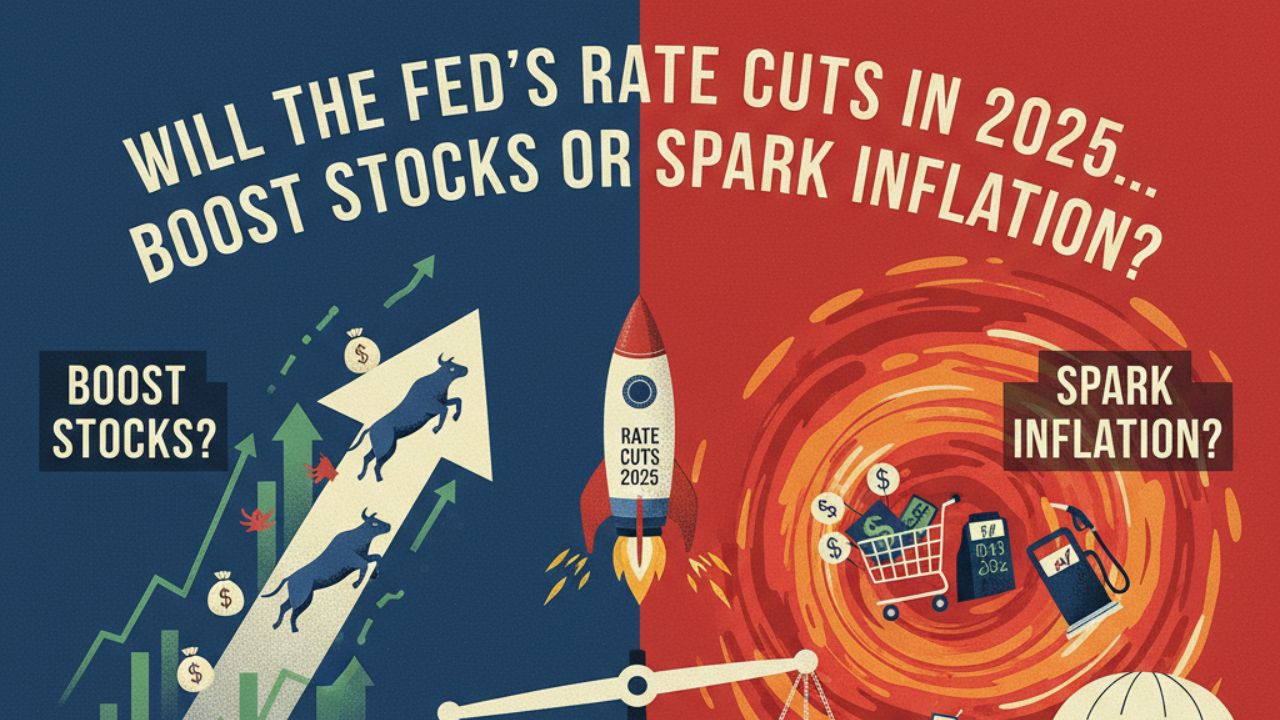As the U.S. economy navigates a complex landscape in 2025, all eyes are on the Federal Reserve’s potential interest rate cuts. These decisions could reshape financial markets and personal finances alike. Federal Reserve Chair Jerome Powell’s comments at the Jackson Hole symposium on August 22, 2025, have fueled speculation. Markets are now pricing in an 88.25% chance of a 0.25% rate cut at the Fed’s September meeting.
Investors and analysts on X (formerly Twitter) are divided. Some expect a stock market rally, while others warn of an “everything bubble” or resurgent inflation.
So, what does this mean for U.S. financial markets, and how should investors prepare? Let’s break it down.
The Fed’s Dilemma: Balancing Inflation and Employment
The Federal Reserve has kept its benchmark federal funds rate steady at 4.25%–4.5% since December 2024. This level is considered restrictive as it keeps borrowing costs high to control inflation.
- Inflation Trends: Inflation has come down from its 2022 peak of over 5.5% but remains sticky at 2.7% (Core PCE, May 2025), above the Fed’s 2% target.
- Labor Market Softening: The July non-farm payrolls report showed just 73,000 jobs added, far below expectations, with earlier months revised lower.
This slowdown has created divisions within the Fed. At the July 2025 meeting, two dissenting members pushed for an immediate 0.25% cut – a rare signal of growing concern about economic weakness.
At Jackson Hole, Powell admitted that “conditions may warrant adjusting our policy stance” as job market risks rise. However, he remains cautious, citing uncertainties such as President Trump’s new tariffs, which could lift import costs and fuel inflation.
Also Read – The Very First Post You Should Read to Learn Cryptocurrency
How Rate Cuts Could Impact Financial Markets
1. Stock Market: Surge or Bubble?
Lower rates typically boost stocks by cutting borrowing costs for businesses and encouraging consumer spending. Powell’s August speech triggered a Dow Jones rally of 800 points as optimism spread. Analysts like Ed Yardeni forecast the S&P 500 could reach 6,600 by year-end and 7,500 in 2026 if cuts materialize.
Sectors such as technology, real estate, and consumer discretionary tend to thrive in low-rate environments.
But caution remains. Critics warn of an “everything bubble,” with stocks, housing, and crypto near record highs. If corporate earnings fail to justify valuations, a sharp correction could follow.
2. Bonds and Fixed Income
A rate cut generally lowers Treasury yields. Following Powell’s remarks, the 2-year Treasury yield fell to 3.71%. While this reduces returns for bondholders, it could make equities more attractive, potentially shifting capital from bonds to stocks.
However, if tariffs fuel inflation, yields could unexpectedly climb, as they did in 2024, creating market uncertainty.
3. Housing and Consumer Borrowing
Lower rates could ease strain in the housing market. 30-year mortgage rates remain high at 6.8% (June 2025), far above the 3% levels of 2021. Even modest cuts could revive homebuying and refinancing activity, boosting real estate and related sectors.
Consumers may also benefit from lower rates on auto loans and personal loans. Yet, credit card rates – averaging 20.13% – are unlikely to see meaningful relief from small Fed cuts.
4. Inflation Risks and Tariffs
Trade policies are a major wildcard. Trump’s 145% tariffs on Chinese imports could create short-term price spikes. Powell has downplayed these as “one-time” shocks, but persistent trade tensions could keep prices elevated.
The Fed’s current outlook – only two quarter-point cuts in 2025 – signals caution. Policymakers are wary of easing too much while core inflation is still projected at 2.8% by year-end.
What Investors Should Do?
- Diversify Portfolios
Spread exposure across equities, bonds, and alternative assets like gold or crypto. J.P. Morgan strategists emphasize aligning portfolios with long-term goals. - Focus on Defensive Sectors
If inflation stays elevated, defensive sectors such as utilities, healthcare, and consumer staples could offer stability. - Track Key Economic Data
Watch upcoming reports like CPI (September release) and jobs data. These indicators will shape the Fed’s next moves. - Avoid Market Timing
Experts caution against trying to outsmart the market. Northeastern economist Bob Triest notes that staying disciplined is safer than chasing rate-driven rallies.
The Bottom Line
The Fed’s potential rate cuts in 2025 could lift stocks, ease borrowing costs, and boost consumer confidence. But risks remain – asset bubbles, inflation, and trade tensions could all complicate the outlook.
For now, a September cut looks likely. But the path ahead is uncertain, as the Fed walks a fine line between stabilizing prices and supporting employment.
Investors should brace for volatility, stay diversified, and focus on long-term goals.
This article is for informational purposes only and should not be considered financial advice. Investing in stocks, cryptocurrencies, or other assets involves risks, including the potential loss of principal. Always conduct your own research or consult a qualified financial advisor before making investment decisions. The author and publisher are not responsible for any financial losses incurred from actions based on this article. While efforts have been made to ensure accuracy, economic data and market conditions can change rapidly. The author and publisher do not guarantee the completeness or accuracy of the information and are not liable for any errors or omissions. Always verify data with primary sources before making decisions.

